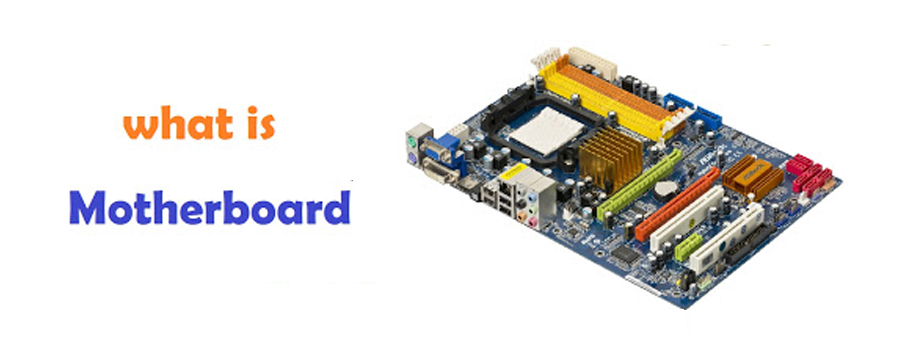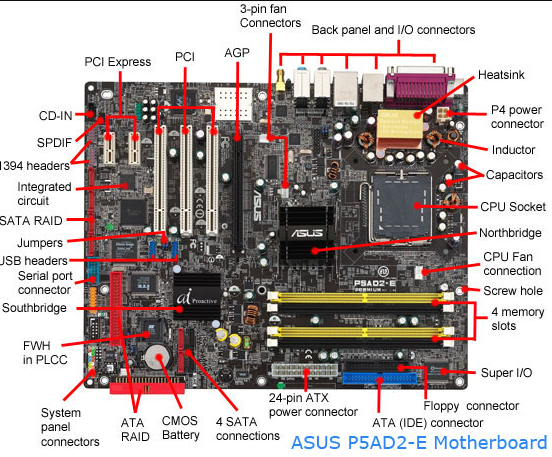The motherboard is the main printed circuit board (PCB) in a computer. The motherboard is a computer’s central communication backbone connectivity point, through which all components and external peripherals connect. Motherboards can be found in almost all computers, especially desktop and laptop PCs.
Factors and Types of Motherboards
We’ve compiled a list below with additional information about different motherboard form factors, including ATX, which is the most common.
Knowledge: As computers advanced, so did motherboards.
- AT
- ATX (Advanced Technology eXtended)
- Baby AT
- BTX (Balanced Technology eXtended)
- DTX (Discontinuous Transmission)
- LPX (Low Profile eXtension)
- Full AT
- Full ATX
- mATX (microATX)
- NLX (New Low Profile Extended)
Features of Motherboard –
- Motherboards vary greatly in supporting the different types of components.
- Motherboards only support one type of CPU and certain types of memory.
- The video card, hard disk, and sound card must be compatible with the motherboard in order to function properly.
- For this to work properly, the case and the power supply must be compatible together.
Motherboard overview –
The motherboard provides connectivity between the computer’s hardware components, such as the processor (CPU), memory (RAM), hard drive, and video card. There are several types of motherboards, which are designed to fit different types and sizes of computers.
Most motherboards are designed to work with specific types of processors and memory, so most motherboards do not work with every processor and memory.
Knowledge: Hard drives are mostly universal and work with most motherboards regardless of type or brand.
Below is a photo of the ASUS P5AD2-E motherboard with labels next to each of its major components.
Where is the motherboard located?
A computer motherboard is located inside the computer case and is where most parts and computer peripherals connect. With tower computers, it is on the left or right side of the tower and is the largest circuit board.
Components of Motherboard –
Motherboards are designed to support specific components such as CPU and memory. It can accommodate most types of hard drives and peripherals.
- CPU – With its logic circuitry that processes instructions from programs, operating system, and other computer components.
- Memory – where instructions and data are temporarily stored and executed.
- Storage Interface – The storage interface is used for solid-state or hard disk drives for persistent data and application storage.
- ROM BIOS – This provides non-volatile memory storing firmware, such as a basic input/output system or BIOS.
- Northbridge chipset connects the CPU, memory, storage, and other components.
- Southbridge chipset – which connects peripheral elements to the motherboard and connects to the northbridge.
- Cooling fans – those that maintain an appropriate internal operating temperature.
- Peripheral Connector Slot – Plugin for peripheral cards, such as graphics and communications adapters.
- Connectors for peripheral devices – such as USB ports and other connectors for external devices.
- Backup Battery – The backup battery ensures main system configuration data when the main power is unavailable.
- Power connector – Power connector, connecting to an external power source.
Most common parts of all motherboard :
The parts of a motherboard include power and data connectors, capacitors, heat sinks, and fans. You may also see screw holes for adding new parts or for anchoring them into a device. Look for expansion slots that may be present for adding on other components later. The pieces that plug into it, either with wires or directly, are often called motherboard components. These include :
- Optical drives, such as DVD and CD-ROM
- Video cards and GPUs
- Sound cards
- Hard drives (SSD or HDD)
- Processors (CPU)
- Memory sticks (RAM)

